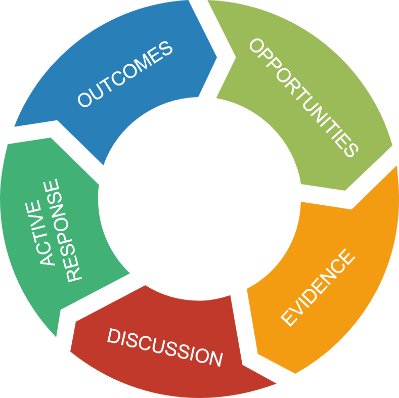Assessment is the systematic, ongoing process of gathering and interpreting evidence of student learning to determine if a program is meeting its learning outcomes, and then using that information to improve the program. This overview of the assessment cycle is intended to introduce the basic steps for how to use assessment to improve your program.

Outcomes
Articulate the meaning of the degree by stating what students will know and be able to do upon graduation. We call these learning outcomes and each program might have anywhere between 4-6 program learning outcomes.
Opportunities
Develop what the learning journey looks like for students through a curriculum map. Where do they have equitable opportunities to be introduced to each learning outcome? Where are there opportunities for practice and feedback? Where do they demonstrate mastery of these learning outcomes?
Evidence
Gather samples of student-produced work to assess how the program has prepared students to achieve these program learning outcomes.
Discussion
Utilizing rubrics and assessment tools, determine if all students are achieving your program learning outcomes as intended. Involve faculty, students, and stakeholders in the discussion.
Active Response
Based on assessment findings, what changes need to be made to ensure equitable learning opportunities exist for all students? Enact those changes to improve learning for all students.